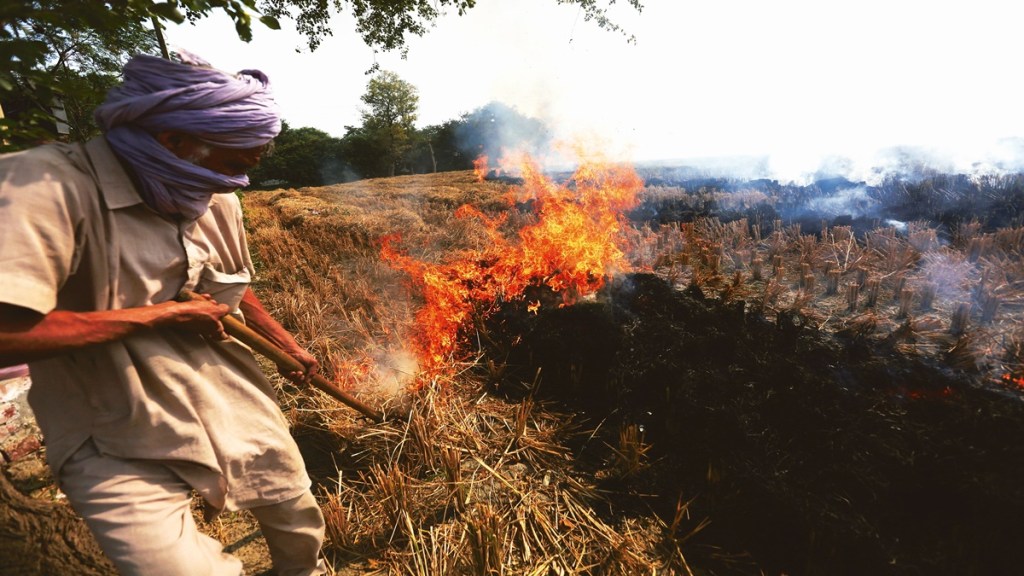It’s that time of the year when deadly dust clouds smother a vast area of north India. That’s air pollution or thick smog in Delhi-NCR, Punjab and Haryana after crop residue burning in several fields in Haryana and Punjab result in increased levels of air pollution.
This has been the case for several years now, as air pollution is common during the winter months every year, resulting in substantial drop in air quality index around the festive season, especially during Diwali, as bursting of firecrackers adds to the bad air quality.
If firecrackers account for Delhi-NCR’s dip in air quality levels, other reasons like low temperature, stubble burning and toxic smoke add to it. It’s no surprise why Delhi’s toxic air has led to a ban on sale, purchase and use of firecrackers extending till the end of the year.
The capital has also passed an order banning the storage, sale, and use of all types of firecrackers in the national capital till January 1, 2023. Other states like Punjab will open a window of two hours — from 8 pm to 10 pm — to burst firecrackers on Diwali. Haryana has prohibited the manufacture, sale and use of all kinds of firecrackers, excluding green crackers. West Bengal has allowed only green fireworks during Kali Puja on October 24 and Tamil Nadu has allowed bursting crackers for an hour each twice on that day. The permitted window lies between 6-7 am and between 7-8 pm.
Also Read: Delhi records minimum temperature of 17.4 degrees Celsius; air quality ‘poor’
Studies over the years have assessed a statistically significant contribution of ambient air pollutants on bursting of firecrackers during Diwali.
Conventional firecrackers, when burst, emit oxides of sulphur and nitrogen along with particulates that include chemicals like copper, zinc, sodium, lead, magnesium, cadmium, etc, which are harmful for human as well as environmental health.
Active roles played by the Supreme Court and various state governments have resulted in ban on conventional firecrackers along with fixing time slots of bursting green firecrackers. Ban on crackers and using only green firecrackers might result in about 30% less particulates in the air. While this is not a solution to the problem, it’s a cleaner alternative.
The Supreme Court had allowed bursting of low-emission crackers in 2018. Green crackers were developed by scientists at CSIR-NEERI (Council of Scientific and Industrial Research-National Environmental Engineering Research Institute) as per the court’s directions.
These do not contain banned chemicals and are called safe water releaser (SWAS), safe thermite cracker (STAR) and safe minimal aluminium (SAFAL) crackers.
As cities are often hotspots for poor air quality, most urban residents around the world are breathing unhealthy levels of pollution. This breathing dangerously polluted air and high levels of pollutants can have a negative effect of air toxicity on our health. Polluted air can trigger irregular heart rhythms in teenagers, says a new finding by Journal of the American Heart Association.
Among the other forms of air pollution, two main pollutants are particularly important in urban environments: ambient (outdoor) fine particle air pollution (PM2.5) and nitrogen dioxide (NO2). Ambient primarily comes from vehicle emissions, coal-burning power plants, industrial emissions, and other sources.
The size of particles is 2.5 micrograms or sometimes smaller and these easily get into the lungs, or the bloodstream. Nitrogen dioxide exposure is linked to asthma symptoms.
Poor air quality also results in deaths that occur due to stroke, heart attack, diabetes, lung cancer, chronic lung diseases and neonatal diseases, allergic problems like nasal discharge/sneezing, headache, eye burning, sore throat, etc, have also been observed, especially in children. This is also the time when the number of cases of influenza, H1N1 and pneumonia rise due to change in weather conditions.

